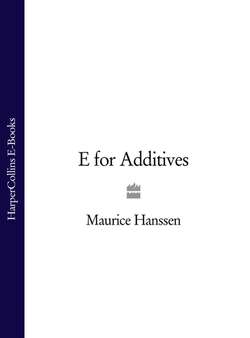Читать книгу E for Additives - Maurice Hanssen - Страница 27
6. P for Pesticides
ОглавлениеA report from the American National Academy of Sciences was stated, according to an article in The Independent of 28 May 1987, to have studied 28 of the 53 pesticides which the Environmental Protection Agency deemed to be carcinogenic.
There was a lack of data on a number of the other pesticides used, but it was found that a small number of the widely used pesticides posed the greatest hazard to health, and it was suggested that three petrochemical compounds—the herbicide linuron and the insecticides chlorodineform and permethrin—be banned.
Permethrin is sprayed on almost every fruit, nut and vegetable purchased in America, says the article, and linuron is extensively used on soya beans and potatoes.
The difficulty for the EPA, which is a government agency, is that if it bans a chemical as being harmful to the consumer then it has to pay the manufacturer the cost of all the unused chemical plus the anticipated margin of profit.
It has frequently been suggested that we write a book as informative about pesticides as we hope this is about additives. The difficulty is clear. You cannot tell if a product contains an excessive quantity of pesticides without a clear labelling obligation. Until this comes about all that can be done is to give general guidance.
The Americans came to the conclusion that, if the fruits and vegetables are sprayed with the worst possible selection of permitted pesticides, the rating list of danger from contracting cancer was:
Tomatoes, beef, potatoes, oranges, lettuce, apples, peaches, pork, soya beans, wheat, beans, carrots, chicken, grapes and corn.
As to risk, the committee thought that 5.8 cases of cancer per thousand people consuming this list of foods when treated with the pesticides specified was a realistic forecast. There can be no better argument for selecting organically grown fruit and vegetables with some seal of approval—the most reliable being that of the Soil Association—and also dairy products and meat with similar quality controls. Fortunately, this branch of farming which was pioneered by the health food suppliers has now spread into a wider market and you should look out for ‘organic’ signs on foods which will not only have very low levels of pesticides but also very superior flavour.
Foods, herbs and spices, imported from overseas are rarely checked for pesticide residues. Those tests that have been undertaken show very grave cause for concern.
For example, lettuces from certain Mediterranean growers are produced in polythene tunnels under a continual mist of insecticides, fungicides and water until the moment of picking. The laboratory equipment at our ports is so out-dated that 10–14 days are required for analyses by which time the food would be bad. Finland has achieved the highest standards for import quality control, possibly the best in the world, with the result that growers produce special low pesticide residue produce for that country. We must demand equal standards throughout the EEC.
